
HOW TO KILL BED BUGS
“Good night, sleep tight, don’t let the bed bugs bite”
welcome to the Mr Bed Bug website. The number one online resource for Bed Bug information and Treatment in the world, Do you have a Bed Bug infestaton? do you need information on how to kill bed bugs in your home?
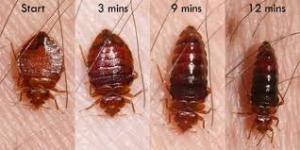
Our Useful guides will give handy advice starting off with bed bug prevention and how to ensure you don’t get bed bugs in your home in the first place to how to detect a bed bug infestation and the various treatments and remedy’s to kill bed Bugs.
Did you think Bugs were a nightime Tale? Sleep tight dont let the bed bugs bite…… If you have bed bugs in your hone you will soon releasee this is no old time tale. Apart from the pysical symptoms such as irritation, bites and the mess these creatures leave behind, the sycological dagame to a persons mental health can equilly be affected inducing bed bug paranoia for sometimes years after your bed bug problem is solved.
What are Bed Bugs
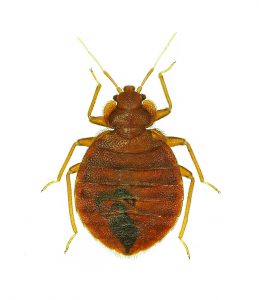
Bed bugs are a parasitic type insect. They feed only on human blood, however they have been known to also drink animal blood. The main bedbug is technicaly called Cimex lectularius, this is the one you will find in your home and bed. Read our bedbug information page.
Why are they Called Bed Bugs?
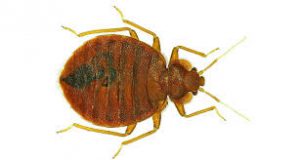
The bed bug name comes from its preferred habitat of Cimex lectularius, meaning warm houses and especially near or inside beds or other sleeping areas. Although its commonly thought bed bugs are only active at night they can also be active in daytime hours and will feed anytime they feel hungry day or night. They will normally feed on your blood without even being noticed.
Dangers and Health affects of Bed Bugs
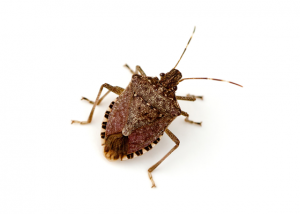
A number of adverse health symptons could occur from a bed bug bite, such as: skin rashes, psychological effects, and allergic symptoms. Read our page about bed bug pysical symotoms.
Can bed Bug Transmit deases from human to human?
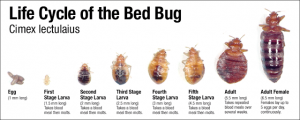
There are no known cases of a bed bug bite transfering any dease from person to person via blood mixing. However bed bugs can be infected with at least 28 human pathogens. At this stage no studies have found that the Bed Bugs are capable of transmitting any of these to humans. In Studies Bed Bug have been found with methicillin-resistant Staphylococcus aureus (MRSA) and with vancomycin-resistant Enterococcus faecium (VRE), but the significance of this is still unknown.
Studies into potential transmission of HIV, MRSA, hepatitis B, hepatitis C, and hepatitis E have not found any evidence that bed bugs can spread these diseases. Read our page about bedbug disease transmission.
How do i Know if i Have Bed Bugs?
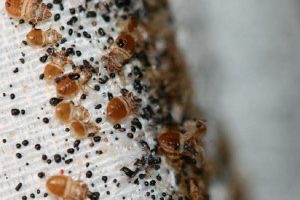
An infestation of bed bugs will present Certain signs and symptoms; finding the adult insects confirms the diagnosis. Read our Page about Bed Bug Bites and view photo’s of what a bed bug bite looks like.
History of Bed Bugs
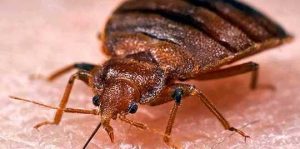
Bed bugs have been a known parasite affecting humans for hundreds and thousands of years. In the1940s, they were nearly eradicated in the developed world and cases in the UK were at an all time low, however cases have increased in prevalence since 1995, likely due to the Bed Bugs new pesticide resistance, government bans on effective pesticides, and travel to countrys who have a warm climate and as such are the perfect breeding ground for Bed Bugs. Since 1995 bed bug bites and related conditions have seen an anual rise in reporting. Read our page on the history of bed bugs.
Have I been bitten by a Bedbug?
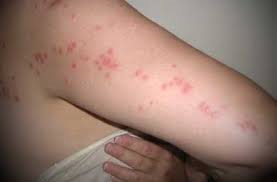
Diagnosing a Bedbug infestation involves both finding the bed bugs and the symtoms of there feeding on a human body. Read our page about spotting a Bed Bug infestation.
Treatment Methods
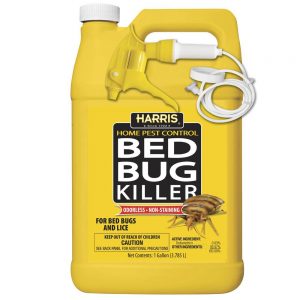
The Treatment of bedbugs involves first the elimination of the bedbug creature (including its eggs) and taking measures to treat symptoms until they resolve. Read our page about Bedbug Btreatment Methods.
Affects on Humans from Bed Bug Bites
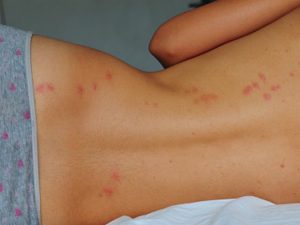
Bed bug bites known technicaly as cimicosis can lead to a range of skin manifestations from no visible effects to prominent red wheeping blisters. Other effects include skin rashes, psychological issues, and allergic symptoms.
What do Bed Bugs look like?
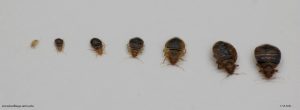
Adult bed bugs are usually a light brown/reddish-brown. They can appear flat or oval, and have no hind wings. The front wings of a bed bug are vestigial and reduced to pad-like structures. Bed bugs have segmented abdomens with microscopic hairs that give them a banded appearance. Adults grow to 4–5 mm long and 1.5–3 mm wide.
What does a Baby Bed Bug Look Like?
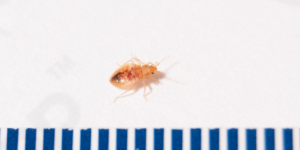
Newly hatched bedbugs are known as nymphs and are translucent and lighter in color. They become browner as they moult there skins and reach age. A baby bed bug (nymph) of any age that has just eaten a blood meal will be bright red with a translucent abdomen, fading to brown over the next several hours, and to black within two days as the Bedbug digests its dinner.
How can i be sure its a bedbug and not another type of Bug?
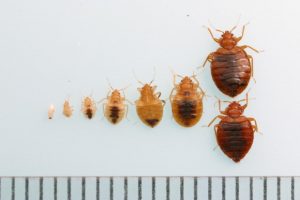
Bed bugs can occassionaly be mistaken for other insects, Eamples are: booklice, small cockroaches, or carpet beetles; however, when warm and active, their movements are more ant-like and, like most other true bugs, they emit a characteristic disagreeable odor when crushed.
How do bed Bugs Comunicate?
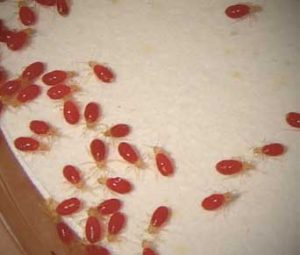
Bed bugs comunicate by using pheromones and kairomones to communicate regarding nesting locations, feeding, and reproduction.
How long does a Bed Bug live for?
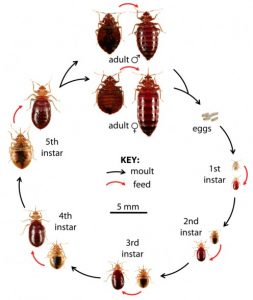
the life of a bed bug varies by species and is also dependent on feeding, and conditions in the nesting enviroment. Bed bugs can survive a wide range of temperatures and atmospheric compositions.
Below 16.1 °C adults enter semihibernation and can survive longer; they can survive for at least five days at -10 °C, but die after 15 minutes of exposure to -32 °C (-26 °F).
Most home freezers can reach temperatures low enough to kill most life stages of bed bug, with 95% mortality after 3 days at -12 °C (10 °F). Bed Bugs show high desiccation tolerance, surviving low humidity and a 35–40 °C range even with loss of one-third of body weight; earlier life stages are more susceptible to drying out than later ones.
The thermal death point for C. lectularius is 45 °C and all stages of life are killed by 7 minutes of exposure to 46 °C (115 °F). A recent Study also showed Bed bugs cannot survive high concentrations of carbon dioxide for very long periods; exposure to nearly pure nitrogen atmospheres, however, appears to have relatively little effect even after 72 hours.
Where do Bed Bugs Live?

Bed bugs are known as obligatory hematophagous: bloodsucking insects. Most Bedbugs feed on only humans when other prey are unavailable. Bedbugs do not need to drink water as they obtain all the additional moisture they need from water vapor in the surrounding air. Bed bugs are mostly attracted to their hosts primarily by carbon dioxide from the persons breath, but also by warmth, and certain chemicals.
Which parts of as Human do Bed Bugs find most Tasty?

Bedbugs prefer exposed skin, preferably the face, neck, and arms of a sleeping person. If you sleep naked you are a tasty meal to any incumbent Bed Bugs.
Bedbugs have a mouth part that saw’s through your skin, and inject saliva with anticoagulants and painkillers.
Who is affected by Bed Bugs?

Everyone in a bedbug Infested environment will be bitten at some point but the Sensitivity of humans varies from extreme allergic reaction to no reaction at all (about 20%). The Bed Bug bite usually produces a swelling without a red spot, but when many bugs feed on a small area, reddish spots may appear after the swelling subsides.
How Long can a Bed Bug Live for?
Under certain cool conditions adult bed bugs can live for over a year without feeding, but under typically warm conditions they try to feed at five- to ten-day intervals, and adults can survive for about five months without food. Younger Bedbugs cannot survive as long, though even the vulnerable newly hatched first Bed Bugs can survive for weeks without taking a blood meal.
How do Bed Bugs Bite you?
The bed bug pierces the skin of its human food host with a stylet fascicle, rostrum, or “beak”. The rostrum is composed of the maxillae and mandibles, which have been modified into elongated shapes from a basic, ancestral style.
The right and left maxillary stylets are connected at their midline and a section at the centerline forms a large food canal and a smaller salivary canal. The entire maxillary and mandibular bundle penetrates the skin.
The tips of the right and left maxillary stylets are not the same; the right is hook-like and curved, and the left is straight. The right and left mandibular stylets extend along the outer sides of their respective maxillary stylets and do not reach anywhere near the tip of the fused maxillary stylets. The stylets are retained in a groove in the labium, and during feeding, they are freed from the groove as the jointed labium is bent or folded out of the way; its tip never enters the wound.
The mandibular stylet tips have small teeth, and through alternately moving these stylets back and forth, the insect cuts a path through tissue for the maxillary bundle to reach an appropriately sized blood vessel. Pressure from the blood vessel itself fills the insect with blood in three to five minutes. The bug then withdraws the stylet bundle from the feeding position and retracts it back into the labial groove, folds the entire unit back under the head, and returns to its hiding place.[4]
How much blood does a Bed Bug Take?
It takes between five and ten minutes for a bed bug to become completely full with blood. In all, the insect may spend less than 20 minutes in physical contact with its host, and does not try to feed again until it has either completed a moult or, if an adult, has thoroughly digested the meal.
How do Bed Bugs reproduce
Bed bugs are genetically designed to withhold inbreeding. Male bed bugs sometimes attempt to mate with other males and pierce their abdomens. This behaviour occurs because sexual attraction in bed bugs is based primarily on size, and males mount any freshly fed partner regardless of sex.
All bed bugs mate by a system called traumatic insemination. Female bed bugs possess a reproductive tract that functions during oviposition, but the male does not use this tract for sperm insemination. Instead, the male pierces the female’s abdomen with his hypodermic penis and ejaculates into the body cavity. In all bed bug species except Primicimex cavernis, sperm are injected into the mesospermalege, a component of the spermalege, a secondary genital structure that reduces the wounding and immunological costs of traumatic insemination. Injected sperm travel’s via the haemolymph (blood) to sperm storage structures called seminal conceptacles, with fertilisation eventually taking place at the ovaries.
What are the Life stages of a Bed Bug?
Bed bugs have five immature nymph life stages and a final sexually mature adult stage. They shed their skins through ecdysis at each stage, discarding their outer exoskeleton, which is somewhat clear, empty exoskeletons of the bugs themselves. Bed bugs must molt six times before becoming fertile adults, and must consume at least one blood meal to complete each molt.
Each of the immature stages lasts about a week, depending on temperature and the availability of food, and the complete lifecycle can be completed in as little as two months. Fertilized females with enough food lay three to four eggs each day continually until the end of their lifespans (about nine months under warm conditions), possibly generating as many as 500 eggs in this time. Genetic analysis has shown that a single pregnant bed bug, possibly a single survivor of eradication, can be responsible for an entire infestation over a matter of weeks, rapidly producing generations of offspring.
Bed Bug Mess
Bed bugs can exist singly, but tend to congregate once established. Though strictly parasitic, they spend only a tiny fraction of their lifecycles physically attached to hosts. Once a bed bug finishes feeding, it relocates to a place close to a known host, commonly in or near beds or couches in clusters of adults, juveniles, and eggs—which entomologists call harborage areas or simply harborages to which the insect returns after future feedings by following chemical trails.
These places can vary greatly in format, including luggage, inside of vehicles, within furniture, amongst bedside clutter—even inside electrical sockets and nearby laptop computers. Bed bugs may also nest near animals that have nested within a dwelling, such as bats, birds, or rodents. They are also capable of surviving on domestic cats and dogs, though humans are the preferred host of C. lectularius.
What do Bed Bugs Smell Like?
Bed bugs can also be detected by their characteristic smell of rotting raspberries. Bed bug detection dogs are trained to pinpoint infestations, with a possible accuracy rate between 11% and 83%. Homemade detectors have been developed.
How to Kill Bed Bugs
Bed bugs are extremely difficult to get rid of. This frequently requires a combination of nonpesticide approaches and the use of insecticides.[6][9]
Mechanical approaches, such as vacuuming up the insects and heat-treating or wrapping mattresses, are effective. An hour at a temperature of 45 °C (113 °F) or over, or two hours at less than -17 °C (1 °F) kills them. This may include a domestic clothes drier for fabric or a commercial steamer. Bed bugs and their eggs will die on contact when exposed to surface temperatures above 180 degrees and a steamer can reach well above 230 degrees. A study found 100% mortality rates for bed bugs exposed to temperatures greater than 50 °C (122 °F) for more than 2 minutes. The study recommended maintaining temperatures of above 48 °C for more than 20 min to effectively kill all life stages of bed bugs, and because in practice treatment times of 6 to 8 hours are used to account for cracks and indoor clutter.
The Heating Method to KILL Bed Bugs
This method is expensive and has caused fires. Starving them is not effective as they can survive without eating for 100 to 300 days, depending on temperature. For public health reasons, individuals are encouraged to call a professional pest control service to eradicate bed bugs in a home, rather than attempting to do it themselves, particularly if they live in a multifamily building.
Insecticides to KLL BED BUGS
As of 2012, no truly effective insecticides are available. Insecticides that have historically been found effective include pyrethroids, dichlorvos, and malathion. Bed Bug Resistance to pesticides has increased significantly over time, and harm to health from their use is of concern.
The carbamate insecticide propoxur is highly toxic to bed bugs, but it has potential toxicity to children exposed to it, and the US Environmental Protection Agency has been reluctant to approve it for indoor use.
Boric acid, occasionally applied as a safe indoor insecticide, is not effective against bed bugs because they do not groom.
The fungus Beauveria bassiana is being researched as of 2012 for its ability to control bed bugs. As bed bugs continue to adapt pesticide resistance, researchers have examined the insect’s genome to see how its adaptations develop and to look for potential vulnerabilities that can be exploited in its growth and development phases.
Predators of Bed Bugs
Natural enemies of bed bugs include the masked hunter insect (also known as “masked bed bug hunter”), cockroaches, ants, spiders (particularly Thanatus flavidus), mites, and centipedes (particularly the house centipede Scutigera coleoptrata). However, biological pest control is not considered practical for eliminating bed bugs from human dwellings.
Bed Bug History
Bed bugs were first mentioned in Germany in the 11th century, in France in the 13th century, and in England in 1583, though they remained rare in England until 1670. Some in the 18th century believed bed bugs had been brought to London with supplies of wood to rebuild the city after the Great Fire of London
Bed bugs occur around the world. Rates of infestations in developed countries, while decreasing from the 1930s to the 1980s, have increased dramatically since the 1980s. Previously, they were common in the developing world, but rare in the developed world. The increase in the developed world may have been caused by increased international travel, resistance to insecticides, and the use of new pest-control methods that do not affect bed bugs.
The exact causes of this resurgence remain unclear; it is variously ascribed to greater foreign travel, increased immigration from the developing world to the developed world, more frequent exchange of second-hand furnishings among homes, a greater focus on control of other pests, resulting in neglect of bed bug countermeasures, and increasing resistance to pesticides.
Declines in household cockroach populations that have resulted from the use of insecticides effective against this major bed bug predator have aided the bed bugs’ resurgence, as have bans on DDT and other potent pesticides.
The fall in bed bug populations after the 1930s in the developed world is believed partly due to the use of DDT to kill cockroaches. The invention of the vacuum cleaner and simplification of furniture design may have also played a role.
The common bed bug (C. lectularius) is the species best adapted to human environments.
In the mid-19th century, smoke from peat fires was recommended as an indoor domestic fumigant against bed bugs. Dusts have been used to ward off insects from grain storage for centuries, including plant ash, lime, dolomite, certain types of soil, and diatomaceous earth or Kieselguhr. Of these, diatomaceous earth in particular has seen a revival as a nontoxic (when in amorphous form) residual pesticide for bed bug abatement. While diatomaceous earth performed poorly, silica gel may be effective.
Bean leaves have been used historically to trap bedbugs in houses in Eastern Europe. The trichomes on the bean leaves capture the insects by impaling the feet (tarsi) of the insects. The leaves are then destroyed.
Prior to the mid-20th century, bed bugs were very common. According to a report by the UK Ministry of Health, in 1933, all the houses in many areas had some degree of bed bug infestation. The increase in bed bug populations in the early 20th century has been attributed to the advent of electric heating, which allowed bed bugs to thrive year-round instead of only in warm weather.
The decline of bed bug populations in the 20th century is often credited to potent pesticides that had not previously been widely available. Other contributing factors that are less frequently mentioned in news reports are increased public awareness and slum clearance programs that combined pesticide use with steam disinfection, relocation of slum dwellers to new housing, and in some cases also follow-up inspections for several months after relocated tenants moved into their new housing.
When did Bed Bugs come back?
Bed bug infestations have resurged since the 1980s for reasons that are not clear, but contributing factors may be complacency, increased resistance, bans on pesticides, and increased international travel. The U.S. National Pest Management Association reported a 71% increase in bed bug calls between 2000 and 2005. The number of reported incidents in New York City alone rose from 500 in 2004 to 10,000 in 2009. In 2013, Chicago was listed as the number 1 city in the United States with the worst bed bug infestation. As a result, the Chicago City Council passed a bed bug control ordinance to limit their spread. Additionally, bed bugs are reaching places in which they never established before, such as southern South America.
One recent theory about bed bug reappearance in the US is that they never truly disappeared, but may have been forced to alternative hosts. Consistent with this is the finding that bed bug DNA shows no evidence of an evolutionary bottleneck. Furthermore, investigators have found high populations of bed bugs at poultry facilities in Arkansas. Poultry workers at these facilities may be spreading bed bugs, unknowingly carrying them to their places of residence and elsewhere after leaving work.
We hope you Have enjoyed our Bed Bug Information Blog. Kill your Bed Bugs Today!
